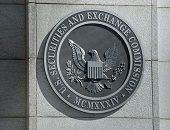Barcodes of Finance 4
7. Will blockchain technology affect the drive toward barcodes? It most definitely should—and in a positive way. The maintenance of a distributed database of identifiers, both for participants and products traded throughout the global financial supply chain is the easiest global blockchain infrastructure application to be developed. A global database of all the world’s participant and product identifiers, maybe a half billion records, is limited in scale, both as to data recorded in its distributed ledger and in its limits of processing speed—seconds required, at the most. Both parameters of speed and scale are well within the boundaries of current […]
Barcodes of Finance 3
5. Great, the G20 set up the Financial Stability Board to set things straight. So, what’s the problem? It was thought by all that “regulatory compulsion” at such a global level, overseen by the world’s most prominent collection of leaders of the largest economies, would finally solve the collective action problem that stymied the industry from doing this on their own. Industry members could not justify stepping aside from each firm’s own self-interest in maintaining the status quo. It would be costly to re-engineer legacy systems built in convoluted increments over the previous six decades. Everyone without exception wanted to […]
Barcodes of Finance 2
3. What allowed non-standard transaction date to persist and what was your response? I had spent my whole career in various sectors of finance and as an advisor to many financial institutions as a consulting Partner with PwC, responsible for the Financial Services sector. I saw the same sets of transaction data described differently in each firm, even though they would need to match perfectly between firms in order to confirm the transaction with the counterparty and either receive payment or pay for it. This disorder was managed by delaying the payment until all the details were reconciled, first by […]
Barcodes of Finance 1
After the holidays, Morty was bragging he’d been out to a new, very swanky seafood restaurant. “The maître d’ said they’re planning to bring in seafood barcodes.” I immediately pictured a slab of fish on Styrofoam with the price barcode sticker on it—straight from my local supermarket. “And this is at a high-end place?” I said skeptically. “Yeah, but it’s an identifier code, not a price sticker. It’s so the customer can verify they’re getting what they’re paying for,” he said. “Apparently there’s a big push to identify species, and make the information available.” Talking about fish barcodes reminded me […]
Shifting Energy Markets
How are strategic priorities in energy markets shifting? What are the risk management implications? “Geopolitical risks have worsened and technological innovation is causing more disruption,” said Medy Agami, senior partner and vice-chairman at Ben-Roz and Associates and co-founder of the consulting firm Opimas. He was the sole presenter of the webinar “Energy Market Strategy and Risk Playbook: How to prosper amid a wave of disruptive innovation, geopolitical uncertainty, market volatility & exponentially growing risk landscape in 2018 & beyond” sponsored by the Global Association of Risk Professionals (GARP) on August 7, 2018. “There are five main forces acting on fundamentally shifting markets,” […]
Recent SEC Enforcement
Given the trends that are emerging for enforcement by the U.S. Securities and Exchange Commission (SEC), what’s a risk manager to do? “Risk managers should use data and data analytics to identify patterns,” said Steven Hilfer, Managing Director in the Disputes & Investigations practice, Capital Markets at Navigant. He was the fourth and final speaker in a four-part webinar panel titled “SEC 2018 Enforcement Trends” sponsored by the Global Association of Risk Professionals (GARP) on July 25, 2018. He argued that the SEC is plunging ahead in the area of data analytics, and it expects companies “to identify patterns prior to being […]
Supreme Court’s Impact
The U.S. Supreme Court will have a significant effect on the interpretation and enforcement of rules at the U.S. Securities and Exchange Commission (SEC) , according to Thomas Zaccaro, Partner, Litigation Department, Paul Hastings LLP. He was the third speaker in a four-part webinar panel titled “SEC 2018 Enforcement Trends” sponsored by the Global Association of Risk Professionals (GARP) on July 25, 2018. “The disgorgement remedies are now limited to five years,” Zaccaro said. This is as a result of the Kokesh vs. SEC case. Disgorgement refers to the act of giving up something (such as profits illegally obtained). Previously the time […]
An Insider’s View
“Quite frankly, I think some have underestimated Clayton,” said Ken Joseph, Managing Director, Disputes and Investigations practice, at Duff & Phelps. “There is a de-emphasis on some areas and re-prioritization of other areas—but he is still focused on wrongdoing.” Joseph was referring to Jay Clayton, the recently appointed chair of the U.S. Securities and Exchange Commission (SEC). Ken Joseph was the second speaker in a four-part webinar panel titled “SEC 2018 Enforcement Trends” sponsored by the Global Association of Risk Professionals (GARP) on July 25, 2018. He is also former Head of the Securities and Exchange Commission’s New York Regional Office Investment […]
A New Landscape
Jay Clayton, the recently appointed chair of the U.S. Securities and Exchange Commission (SEC) under President Trump, has signaled new directions in the enforcement of securities laws. What are the implications for financial risk managers? “There is shift away from ‘broken windows’—trying the smallest cases—and there is no longer a requirement for companies to admit wrongdoing,” said Amy Poster, Managing Principal at Alpha Pacific Strategies. She was the moderator and opening speaker in a four-part webinar panel titled “SEC 2018 Enforcement Trends” sponsored by the Global Association of Risk Professionals (GARP) on July 25, 2018. The SEC appears to be changing its […]
Consolidated Audit Trail
The eighth anniversary of the 2010 flash crash on May 6, 2010, is approaching, Beau Alexander reminded the audience at the webinar organized by the Global Association of Risk Professionals (GARP). Alexander is a Senior Sales Executive at FIS Global Trading, a publicly traded provider of financial services technology. The 2010 flash crash “was the second-largest intra-day swing in the stock market,” he said. That day the market lost two trillion dollars and then rebounded. “When you see volumes drop by 15 percent, there’s an activity that needs to be flushed out.” “Someone sitting in their parents’ basement had caused […]










